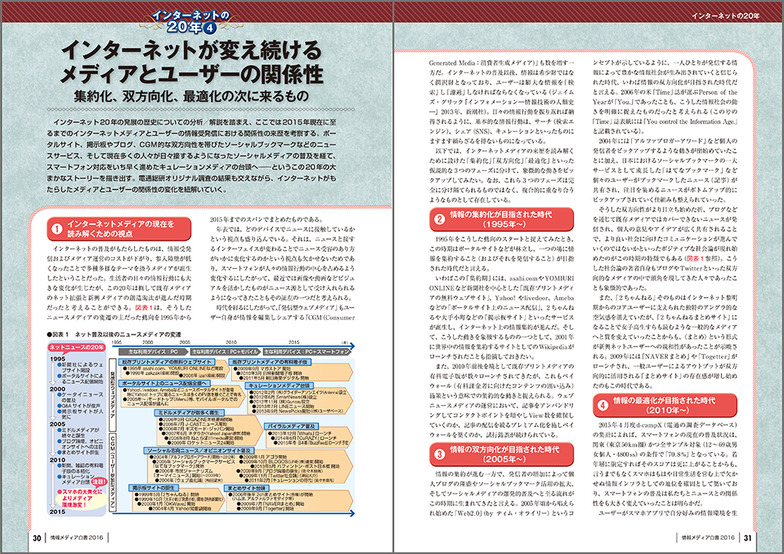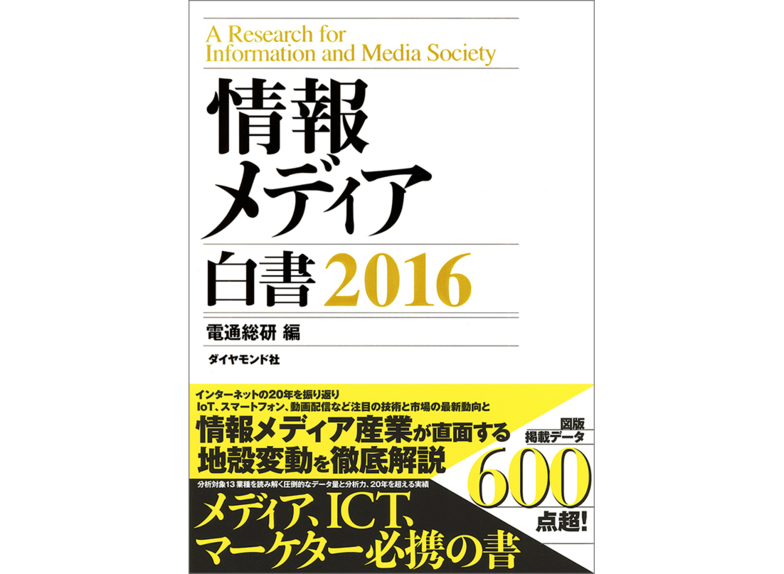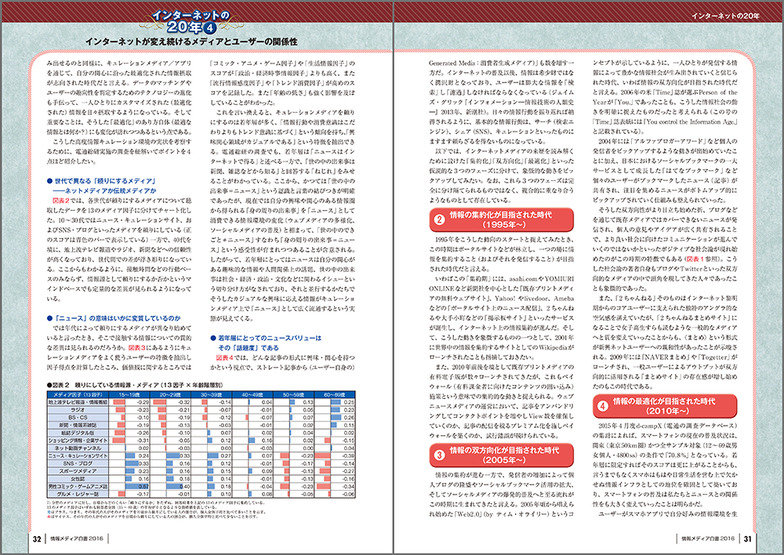This period saw the proliferation of portal sites, representing an era focused on aggregating information (and disseminating it) in a single location.
During this "Aggregation Phase," services like asahi.com and YOMIURI ONLINE—free websites from existing print media, primarily newspapers—emerged. "News distribution on portal sites" via Yahoo!, livedoor, and Ameba, alongside "bulletin board sites" such as 2channel and Oomachi, advanced information aggregation on the internet.
It's also worth noting that Wikipedia, launched in 2001 as a site aggregating information from around the world, symbolized this movement.
Furthermore, around 2010, numerous paid digital editions of existing print media were launched. This too can be seen as a form of aggregation, specifically through paywall strategies (enclosing content for paying subscribers).
In operating web news media, a trial-and-error process continues: whether to unbundle articles to increase contact points and secure views, or to implement premiumization by limiting article distribution and building paywalls.
While information aggregation progressed, this period also saw the rise of personal blogs, the expansion of social bookmarking, and the explosive growth of social media, driven by an increase in content creators.
As signified by the concept of "Web 2.0" (by Tim O'Reilly), which began gaining traction around 2005, this was an era believing that a rich information society would be created through information disseminated by each individual—an era aiming for the bidirectionality of information.
The selection of "You" as Time magazine's 2006 Person of the Year clearly captured this movement in the information society (the cover of that issue stated "You control the Information Age").
By 2004, movements like the "Alpha Blogger Awards" began spotlighting individual content creators. Concurrently, platforms like "Hatena Bookmark," which grew into a major social bookmarking service in Japan, established mechanisms where news (articles) bookmarked by individual users were shared. This allowed news gaining attention to be picked up in a bottom-up manner.
As this interactivity became more prominent, a positive social discourse emerged around this period. It suggested that news not covered by traditional media could be disseminated through blogs, and that the widespread sharing of personal opinions and ideas could advance communication towards a better society. It was also symbolic that the authors of this discourse themselves had risen to prominence within these interactive media, like blogs and Twitter.
Interestingly, while "2channel" itself retained a unique underground atmosphere supported by core users from the internet's dawn, its transformation into "2channel summary sites" changed its nature into mainstream media accessible even to high school girls. This suggests the "summary" format had strong affinity with emerging internet users.
In 2009, "NAVER Summary" and "Togetter" launched, marking the phase where the presence of the "summary site" format—where user-generated output is interactively utilized—began to grow.

According to April 2015 data from d-campX (Dentsu Inc.'s survey database), smartphone penetration currently stands at 70.8% for the Kanto region (within 50 km of Tokyo) and the entire sample population (individuals aged 12-69, 4,800 respondents).
This figure rises further when limited to younger demographics, clearly demonstrating that smartphones have firmly established themselves as indispensable information infrastructure for daily life. It is evident that smartphone adoption has significantly altered our relationship with news.
Just as users can create their preferred information environment through smartphone apps, this era is characterized by the pursuit of optimized information consumption aligned with individual interests via curated media/apps. Aided by technological advances in data matching and user preference assessment, people now consume customized (optimized) information daily.
Crucially, the very nature of this "optimization" (what constitutes optimal information?) is itself undergoing change. For insights into the realities of this advanced information curation environment, refer to the book Information Media White Paper 2016.

Thus far, we have explored the relationship between users and media in the Internet age, and the nature of information transmission and reception within it, using the keywords "consolidation," "interactivity," and "optimization." The characteristics of these media phases do not simply transition one to the next—it is by no means the case that only "optimization" will be emphasized going forward—but rather, they will continue to intertwine complementarily, shaping the vector of news media development.
For instance, one trend—the increasing frequency of news encounters via social media—signifies that news infused with "interactivity" (information originating from one's close friends and acquaintances) is crucial for the recipient's "optimization." The perspective of how to obtain optimized information within the limited time available each day continues to grow in importance, and the technology enabling this is expected to evolve.
However, the proliferation of curation services also brings a paradoxical challenge, often pointed out: the tendency to become surrounded only by information one likes, leading to a narrowing of perspective. This phenomenon, dubbed the "Daily Me" (by Cass Sunstein) or the "Filter Bubble" (by Eli Pariser), is frequently highlighted. News curation services and social media operators are developing countermeasures to address this so-called "optimization paradox."
Related to this is the pain point (a problem or discomfort that should ideally be resolved) in a society where information volume continues to grow exponentially. Few people likely feel they can collect and consume the overflowing information in a way that satisfies them. The challenge of creating a painkiller for this issue still seems unresolved.
A survey by DENTSU SOKEN INC. also clearly shows a split between approximately 20% of highly engaged media users and the remaining 80% of the population.
This reveals that the Pareto principle (the 80:20 rule) holds true in information distribution and consumption. Addressing the social challenge of resolving this polarization between active information consumers and others is an area that should be tackled alongside our own pain points described above.
If the rise of curated media is seen as one attempt to address this situation, it suggests this field still holds significant business potential for future challenges.
Detailed data and analysis can be found in the book 'Information Media White Paper 2016 '.

The book provides detailed explanations with charts and data.









